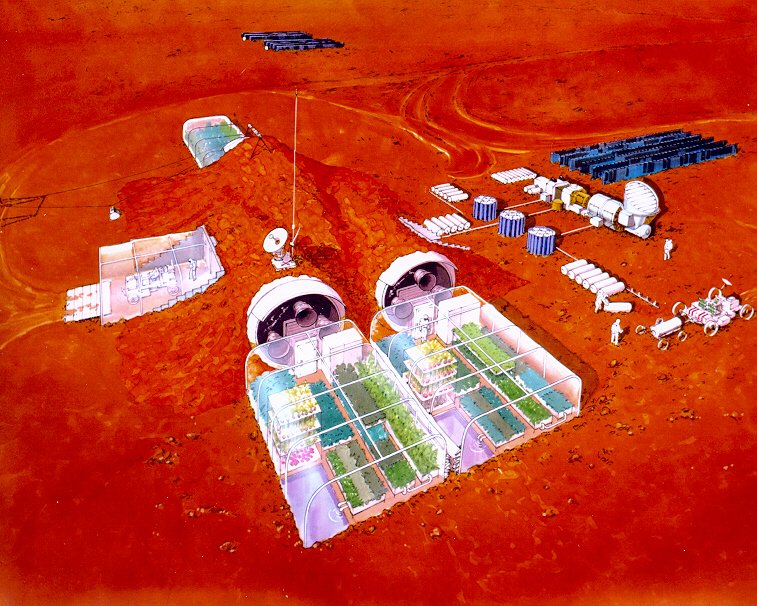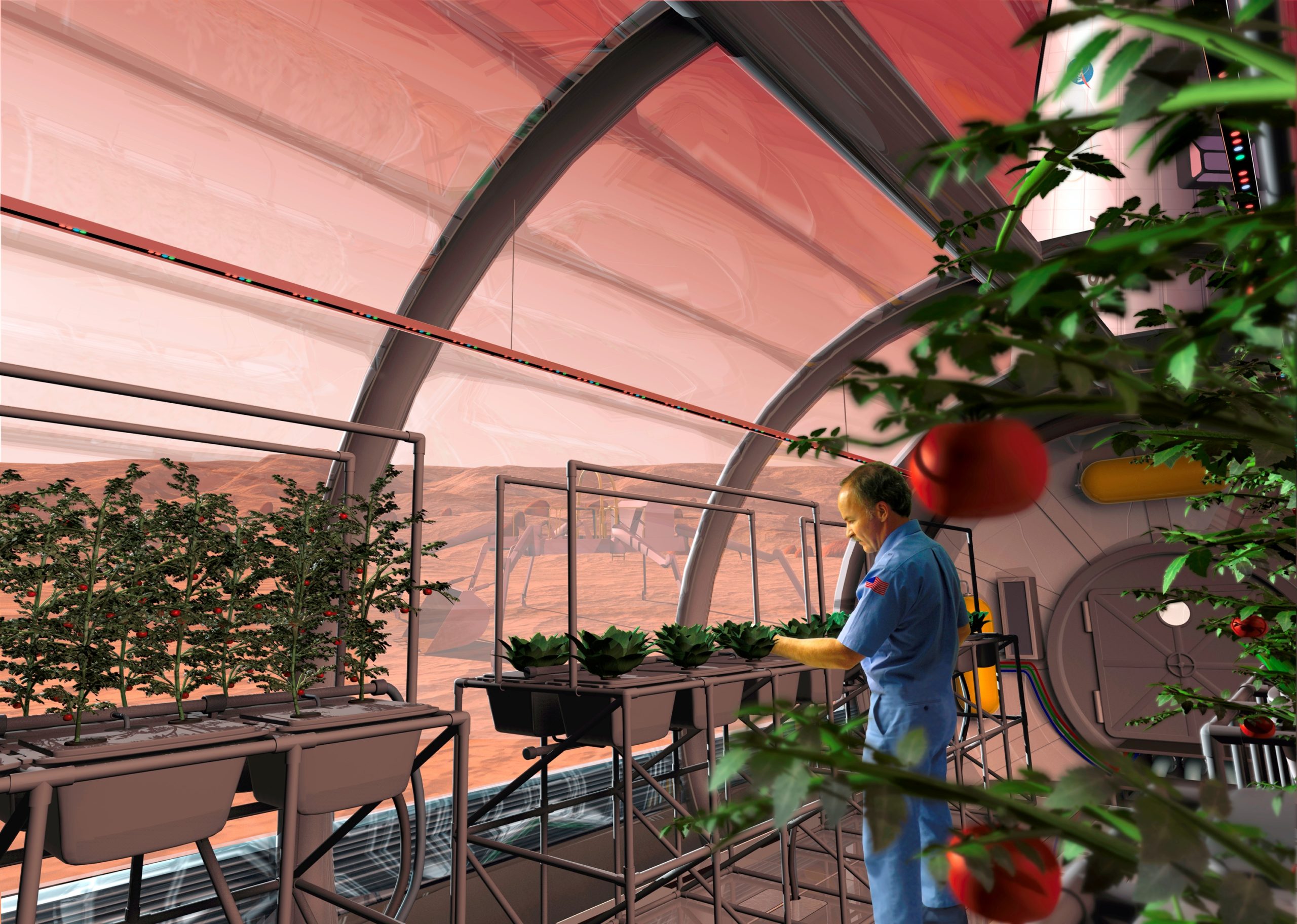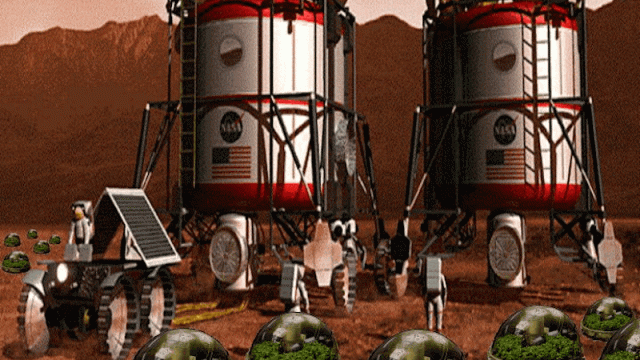In The Martian, Mark Watney claims to be “the great botanist” on Mars — but is he really? Join us as we go down the rabbit hole to try and claim the greatest fictional Martian farmer crown for ourselves.
Top Image: Greenhouse on Mars / NASA
What would you need for a Martian farm?
Just like on Earth, a Martian farm depends on the same basic ingredients to grow plants: You need space, water, soil, some kind of fertiliser, and plenty of light to get off the ground. Unfortunately, none of those things are easily available.

Image: Concept art for Martian greenhouse / NASA
We talked to Ray Wheeler, who leads NASA’s Kennedy Space Center life support system, to figure out just how we might go about finding them. Water for our fictional farm may turn out to be at least a slightly easier get for us than Watney’s fictional farm for one reason: We know know where there is liquid water on Mars. The difficulty is that it’s part of a perchlorate brine that would likely kill off whatever plants it touched. Still, if it can be cleaned and brought in, that’s a major element we can cross off our farming checklist.
For the soil, studies have shown that, in least in simulated versions, Martian soil can sprout plants. Any planned missions would no doubt bring along a good fertiliser of their own. But what of The Martian’s improvised fertiliser solution? “He identified the need,” says Wheeler, “but I think you’d probably need more. And actually it turns out if you recycle any human waste, a lot of studies have shown that urine has a lot more nutrients. There’s a lot of nitrogen and other elements that are useful for plants. But there’s also sodium, which the plants don’t want, so it’s kind of mixed package there.”

Image: Concept art of a future space/farm capsule / NASA
What Watney’s farm is really missing out on, though — and one of the biggest challenges we’d run into in assembling our own Mars homestead — is pulling enough light into our enclosed farm. “If you want things to grow quickly and produce,” says Wheeler, “you need a lot of light. Think about going out into a field in the summer and the amount of light hitting the ground. If you have to generate that electrically that’s not trivial.”
OK, but we’re definitely not just growing potatoes, right?
Actually, if you can only have one crop, it may not be a bad call to go with potatoes. “Potatoes are a good carb source and they do have protein,” Wheeler told us. “They’re not as high in protein as a soybean and they’re also not a real good source of fatty acids, so they’re not a complete diet. But they’re very productive, and they can channel a lot of their growth into the edible part, the tuber.”

Image: Astronaut in a greenhouse / NASA
A full 80 per cent of the potato plant is edible, compared to 40 per cent for most seed crops. Then, there’s also the ease of processing: Unlike, for instance, a stalk of wheat, a potato is essentially a heat and serve food.
Of course, the choice of potatoes in The Martian wasn’t really an optional one — it’s just what he happened to have. So what would Wheeler suggest for a farm that was the result of planning, not improvisation? Tomatoes and strawberries. The reason is that, at least for early Martian farms, farming is likely to be an extremely small-scale operation, possibly just a very small greenhouse with extremely limited growing capabilities.
Not unlike the astronauts aboard the ISS who have been testing out their very first crop of space lettuce, early Martian settlers would probably bring the majority of their diet packed into the cargo. Farmed fruits and vegetables would be more likely to act almost as a seasoning for early foods than a staple. The longer we stay there, though, the more elaborate and complete the farms are likely to get, as each new mission adds a little more on.
